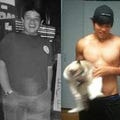4 Myths About Hydration That Refuse To Die
As Derek Zoolander wisely put it, wetness is the essence of life. Whether you like drinking water or not, it accounts for about 60% of your body weight, and plays a pretty darn important role in making sure your body functions normally. But statistics aside, there are a couple of myths about hydration that refuse to die.
Myth One: You Need To Drink Eight Cups A Day
This most well-known but laughably arbitrary rule of thumb has been hammered into us since who knows when. In fact, Dartmouth physician Professor Heinz Valtin went as far as to pen a paper published by the American Physiological Society on the lack of scientific evidence behind the popular axiom.
The truth is, your actual needs can be more than 8 glasses, or less than 8 glasses. There’s no magic number, and the amount changes every day, depending on your size, weight, ambient temperature, daily activities, and, more significantly, your food.
So how do you know how much water you should drink? Before all this science, people relied on a pretty fine-tuned, reliable mechanism to make sure they were getting enough water. It’s calledthirst, and you may have heard of it. Drink enough to satisfy your thirst, and that’s good enough.
Myth Two: If You’re Thirsty, You’re Already Dehydrated
Strictly speaking, it’s true. Thirst is normally triggered by a decrease in your body’s water content. But it’s not as dire as it’s usually made out to seem.
Normal levels of thirst usually come about with a 2-4% reduction in body water. As long as you don’t have kidney problems, this is generally tolerable, and acts as a perfectly sound guide to let you know when you need a glass of H2O.
Dehydration becomes a problem when you exceed an 5-8% reduction in body water. By this stage, however, you would be experiencing dizziness and fatigue–far more severe than a slightly dry mouth.
The thirst principle also applies to when you’re exercising. But if you notice that you forget to hydrate or finish parched, take heed of the American Council on Exercise’s guidelines: about 7-10 oz (about a glass) for every 10 to 20 minutes of heavy activity should be enough.
Myth Three: Sports Drinks Are the Best Option After Exercise
This depends. Sports drinks are full of electrolytes (salt ions) that help your body replace those lost from sweat. These electrolytes are important: they’re crucial for nerve functioning, and help to maintain blood pH levels, among other things. But Gatorade? Less important. Good marketing may try convince you otherwise, but such drinks are really only necessary if you’ve been exercising hard for a long time, like long distance running, or hours of hiking in the hot sun. Even then, beer is a better option.
No matter how hard you killed your leg workout, you’re probably better off sticking to plain water.
Myth Four: Water Flushes Out Toxins From Your Body
Not really. There’s a popular misconception that drinking copious amounts of water will help magically cleanse your innards of the sins of last weekend.
Drinking adequate amounts of water ensures your body’s metabolism works correctly, part of which is the natural detoxification process your liver and kidneys conduct. But they work fine as long as they’re getting enough H2O. Any additional water intake isn’t going to help. In fact, drinking too much water can actually prevent your body’s detoxification process. It reduces the concentration of salt in your blood, which can damage your kidneys and liver and prevent their normal functioning.
16 55
The following replies are approved. To see additional replies that are pending approval, click Show Pending. Warning: These may contain graphic material.



Ruffus
ProfileFollowiseedeaddaleks
ProfileFollowNinety-9
ProfileFollowjdunnfla
ProfileFollowTinklingBoner
ProfileFollow